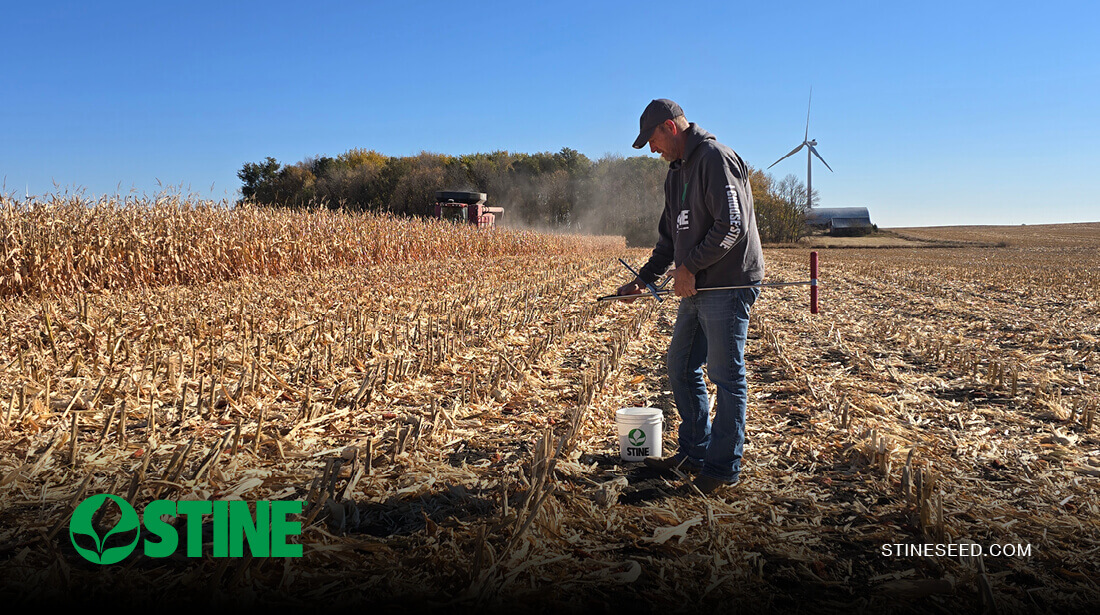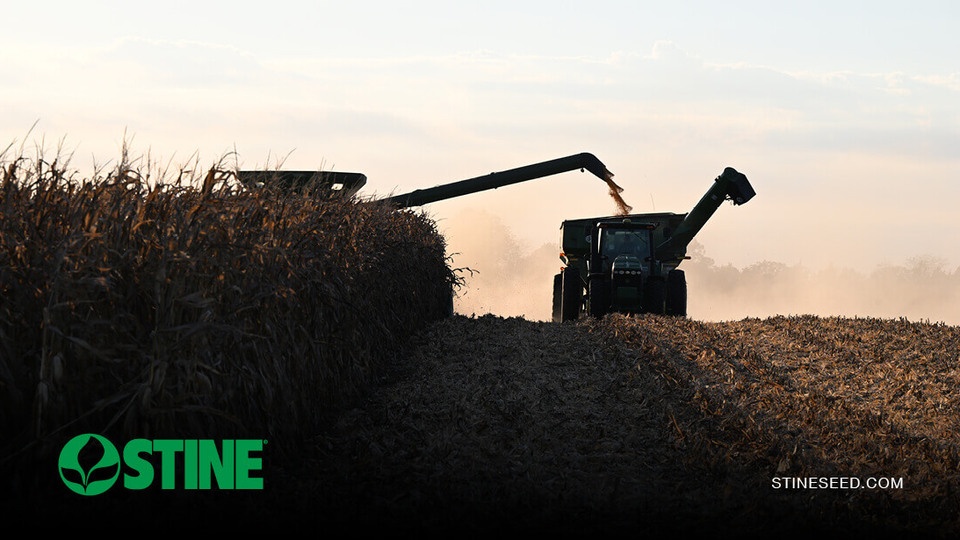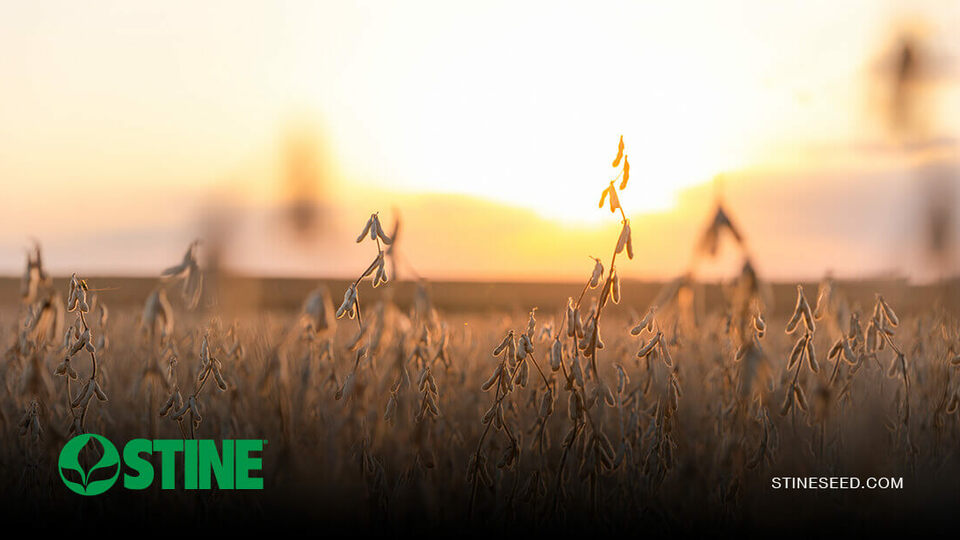As harvest wraps up and fields begin to settle in for winter, it’s the perfect time to plan for next season. One of the most important steps you can take right now is fall soil sampling.

Each growing season impacts soil fertility in unique ways. Nutrient removal can vary depending on the crop, yield level and weather conditions. By testing your fields shortly after harvest, you get a clearer, more accurate picture of what nutrients your crops used this year and how to rebalance those levels before spring.
“Post-harvest sampling takes the guesswork out of fertility. It’s the best way to match nutrient applications with real crop removal and make more informed decisions before spring.”
Tom Larson, Stine director of agronomy
What farmers need to know now
- Timing matters: While soil samples can be collected at any point throughout the year, they’re typically taken in the fall after harvest or in the spring before field work. It’s important to keep timing consistent, so either always in the fall or always in the spring, and testing every two to four years is recommended. According to Michigan State University Extension experts, fall sampling offers some advantages, including more time to collect and analyze results and develop a fertility plan. Fall field conditions can also provide warmer soil temperatures and more consistent moisture levels than in the spring.
- Nutrient depletion is common: High-yielding corn and soybeans often remove more nutrients than expected. Without soil tests, it’s hard to know exactly how much needs to be replaced. Nitrogen, phosphorus, potassium and sulfur, also known as the “big four,” are critical to early crop vitality and season-long success. Understanding what your soils may be lacking, especially these core nutrients, is key to achieving high yields next growing season.
- Fertility planning starts here: Testing now gives you and your agronomist or Stine sales rep time to interpret the results and adjust recommendations. It also allows more flexibility to explore input pricing and develop a cost-effective fertility plan. Whether you’re managing by zone, field or crop rotation, fall testing ensures you’re not overapplying or leaving behind yield potential.
Protect your yield potential
Understanding your soil today lets you make confident, data-driven decisions for your next crop. Knowing your numbers now helps protect your inputs, manage costs and support better decisions heading into planting season.
Talk to your local Stine rep, agronomist or university extension expert about getting your fields sampled this fall. For more information on fall soil sampling, including how to sample and decipher your test results, read these Stine Ask the Agronomist blogs:
Related Articles
-

Understanding Stine’s enhanced oil profile soybeans
December 2025 in Agronomy
-

Corn production growth paves way for more high-performing Stine® hybrids
November 2025 in Agronomy
-

Stine harvest roundup: Part 2
October 2025 in Agronomy
-

Stine harvest roundup: Part 1
October 2025 in Agronomy



